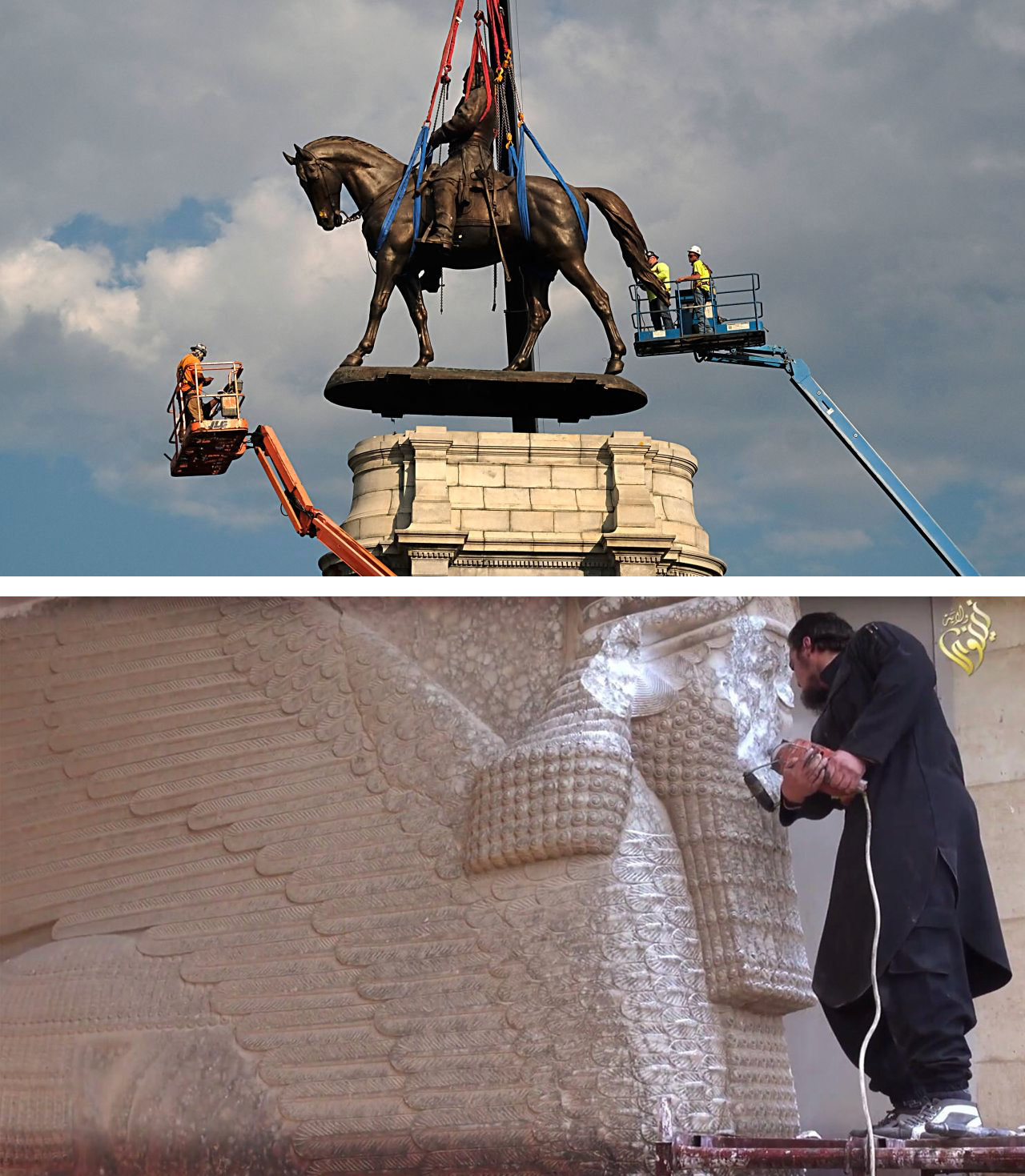
| ||
| Level 200 | ||
| ||
| Level 300 | ||
|
| ||
| Level 400 | ||
|
| ||
All times, days and teaching locations should be confirmed in Wolverine Access | ||
| History of Art | ||
| LS&A | ||
| University of Michigan | ||
| Back to the list of courses |
Special Topics in the Humanities::Iconoclasm Then and Now

Meets together with RCHUMS 334-103
Why do people destroy images?
As the US continues to grapple with the damaging legacies of slavery and civil war, we witness violent debates around the removal of Confederate monuments and statues in cities across the
country. Image censorship, too, plagues our present—for example, the Florida parents who believe Michelangelo's sculpture of David is "pornographic" and have demanded its removal from their children's curriculum. In other parts of the world, images continue to arouse feelings of fear, anxiety, and discontent to the point that they are defaced or erased altogether, as with the Taliban's iconoclastic obliteration of monumental Buddha statues in 2001 and ISIS's systematic destruction of cultural heritage sites—including Islamic ones—across Syria and Iraq from 2014 onward.
The term "iconoclasm" initially emerged in scholarly discourse to describe 8th-century debates over the permissibility of images in Byzantium. We use the term today, however, to describe nearly any instance of image breaking, alteration, displacement, or censorship.
A primary aim of our seminar will be to uncover why images matter so much that they warrant iconoclastic responses. To better understand what is at stake, we will contextualize individual scenarios by asking what is being destroyed, who is destroying it, and why. Our study will take a diachronic approach to iconoclasm by looking at a range of key case studies from different periods and geographies.
HISTART Concentration Distributions: Time Period: Transhistorical, Regions: Transregional
Images: Top: Removal of Confederate Gen. Robert E. Lee statue from Monument Avenue in Richmond, Virginia (2021) Bottom: ISIS member demolishing a lamassu statue at Nimrud, an Assyrian city from the 13th century BCE (2015)